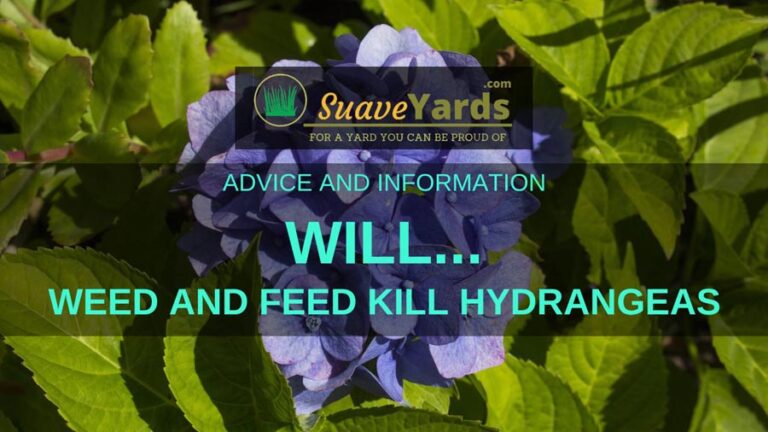If you want to kill weeds instead of flowers, you only need one small item. Your life will never be the same again. Do you hate pulling weeds in flower beds? This post is for you! A few weeks ago, I told you about a great Spectracide product I was going to try. Well, I am here with an update. A fantastic, amazing, you are going to love it update. Let’s kill weeds and NOT flowers!.
When caring for both your lawn and garden beds, using weed and feed products can certainly seem appealing. These combination fertilizer-herbicide treatments promise to nourish grass while tackling weeds in one easy step. But can you safely use weed and feed around ornamental flowers, or will it damage or kill them?
The short answer is it depends. Some weed and feed products are fine on established flowers, while others contain chemicals that could injure or kill delicate blooms and plants. Read on to learn more about using weed and feed safely in landscaping areas that mix flowers and lawn.
How Do Weed and Feed Products Work?
Weed and feed products are granular materials that contain two active ingredients – a chemical fertilizer to nourish grass, and an herbicide to control weeds. When watered in, the fertilizer feeds the lawn while the weed killer targets broadleaf weeds.
The herbicide component is what presents a potential problem for ornamental flowers Weed killers are designed to destroy weeds while leaving grass unharmed But many flowering plants fall into the broadleaf category, making them potentially susceptible to damage.
Risks of Using Weed and Feed on Flowers
Most weed and feed products are not recommended for use around ornamentals and flower beds. Here are some key risks to understand:
- Foliar damage – Spray drift or granules scattering into beds can damage delicate foliage and blooms when watered in.
- Root uptake – Chemicals that leach into the soil can be taken up by plant roots, causing injury or death.
- Residual activity – Some herbicides linger in the soil for weeks or months, posing ongoing risk.
- Slow damage – Impacts may take days or weeks to become visible, slowly compromising plant health
- Weakened plants – Even if plants survive, the herbicide exposure can make them more vulnerable to disease or other stresses.
For these reasons, it’s generally best to avoid using standard weed and feed products in areas near flowers, vegetables, shrubs and other ornamental plantings you wish to preserve.
Weed and Feed Products Safer for Flowers
Some weed and feed options are specially formulated to be less risky for nearby ornamentals. Look for products that state they are safe for use around established flowers and shrubs on the label. Two examples include:
- Preen Flower and Vegetable Garden Weed Preventer – Contains fertlizer plus trifluralin, a pre-emergent that prevents new weeds but does not harm mature plants.
- Scotts Turf Builder Weed and Feed 3 – Uses 2,4-D, MCPP, dicamba and carfentrazone as its weed killing ingredients, said to be safe on listed flowers.
Even with these products, it’s smart to exercise caution and keep the granules from contacting foliage. Never use them on newly planted ornamentals or areas where you’ve recently sowed seeds. And test them on small areas first to check for impacts before widescale use.
Tips for Safely Using Weed and Feed Around Flowers
If you wish to use weed and feed on your lawn while preserving flowers, here are some best practices:
- Carefully read and follow all label instructions for your specific product.
- Check that the product is labeled as safe for use around established ornamentals.
- Avoid scattering granules onto flower beds and garden areas.
- Shield plants with boards or plastic sheeting while applying if needed.
- Water in thoroughly after application to avoid chemical dust.
- Wash off any granules that land on ornamental foliage.
- Allow several years between planting new flowers and using weed and feed.
- Spot treat weeds rather than blanket applying weed and feed in mixed areas.
Alternatives for Weed Control Near Flowers
The safest options for weed management around ornamentals include:
- Mulching beds to smother weeds
- Hand pulling weeds
- Spot spraying herbicide on weeds rather than broadcasting
- Using corrugated cardboard as weed barrier
- Maintaining a thick turf through proper mowing, fertilizing and irrigation to outcompete weeds
Avoiding weed and feed near delicate plantings removes the risk of damage. But if you must use these products, choose flower-safe options and take steps to prevent contact. With smart precautions, you can reduce the hazards to your ornamentals.
How to Kill Weeds in Flower Beds
Next, you are going to need your supplies. The hose was in mine because you want to be sure that if you get the product on any of your valuable flowers, you can wash them off right away with water. I also had a box so I could cover any flowers that were really close to weeds. A few rags will be handy as well especially if your sprayer drips a bit.
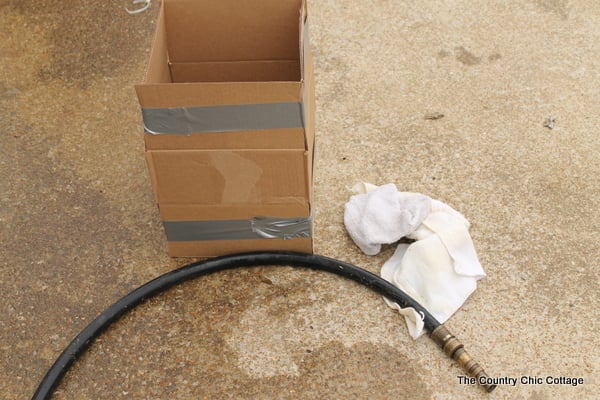
Are you all ready for some before and after pictures? To see the big before pictures, go back to my first post where I begged for help with the landscaping. But Spectracide Weed and Grass Killer came to my rescue y’all. Now my before and after looks a little like his.
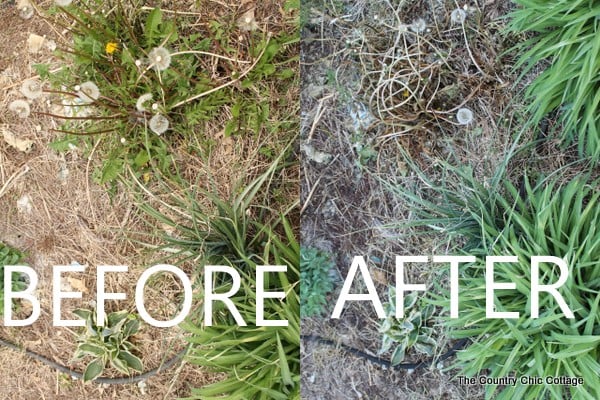
It was sprayed, and that weed didn’t last 24 hours. Yes, it is right next to flowers that are healthy and growing. It made me happy to spray weed killer all over my flower bed and then watch them die off over the next few days. Want some more proof? Let’s look at a time-lapse this time.
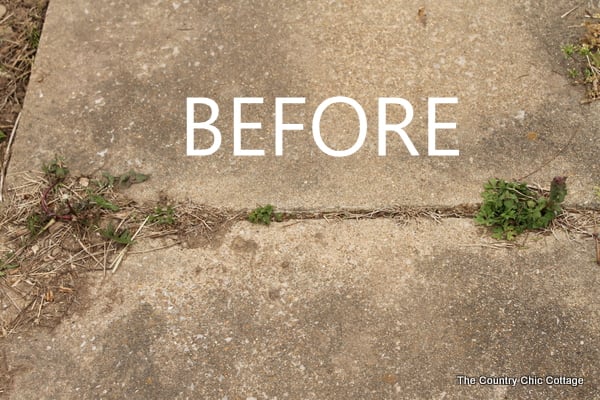
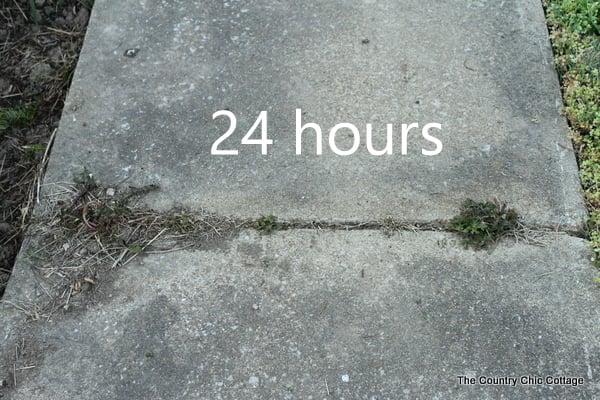
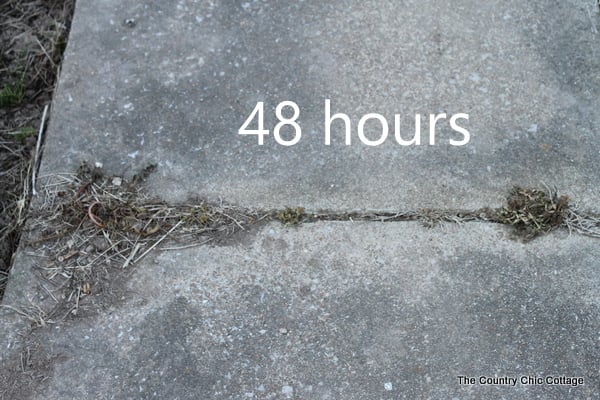
Yep, I even used the product along the cracks in my sidewalk. I was extremely pleased with how everything looked after a few days. I had a flower bed that I could actually work in and make gorgeous. That’s progress! The weeds are also dead to the roots, so I don’t have to worry about them coming back.
5 Powerful Weed Killers for Flower Beds
Can weed killer kill plants?
Weed killer can damage or kill non-targeted plants, but you may be able to save plants from injury if you act quickly. Whether or not you can save the plant depends largely on the type of weed killer used and the extent of the damage. Recognizing the signs and helping the plant grow stronger can save it from dying. How Does Damage Happen?
Does spraying weed killer kill weeds?
Spraying off the foliage also doesn’t help if the weed killer was absorbed through the roots since there’s nothing to wash off. Watering the damaged plants thoroughly can help minimize damage if the roots were affected. It helps to dilute the chemicals and could prevent the plant from absorbing as much of the weed killer if done right away.
Can weed killer damage a plant in the fall?
If the damage happens in the fall, the plant might show signs of damage in the spring. If you become aware of the weed killer contamination immediately, hose off the plant to wash away as much of the herbicide as possible.
Does fertilizer kill weeds?
Weed and feed fertilizers usually contain 2,4-D as their herbicide. Although this chemical is effective in getting rid of plants like dandelions, weed control on the other hand is somewhat questionable. Bindweed, black medic, clover, and ground ivy are not easy to control if you don’t apply an effective herbicide.
- The Ultimate Guide to Growing Strawberries in Raised Beds - August 8, 2025
- No-Dig Garden Beds: The Easiest Way to Grow a Beautiful Garden - August 6, 2025
- How to Protect and Preserve Wood for Raised Garden Beds - August 6, 2025

